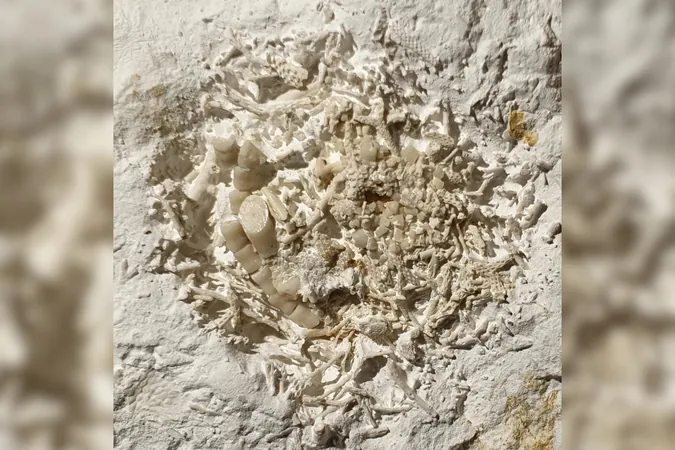
Unveiling 66-Million-Year-Old Fish Vomit: A Fascinating Window into Prehistoric Life
2025-01-29
Author: Kai
Introduction
Humans aren’t the only ones who experience an upset stomach! A remarkable discovery has been made by a fossil hunter in Denmark — a chunk of ancient vomit that dates back an astonishing 66 million years. This astonishing find not only piques our curiosity but also sheds light on the diets of prehistoric creatures.
What is Regurgitalite?
Known scientifically as regurgitalite, this fossilized remnant encapsulates what was once the stomach contents of an animal. Such fossils are invaluable to researchers, revealing insights into the dietary habits and interactions of ancient species with their environment.
The Discovery
The intriguing specimen was unearthed by local fossil hunter Peter Bennicke in the chalky cliffs of Stevns Klint on Zealand Island. This region is rich in geology and history, marking the time just before a mass extinction event that wiped out the dinosaurs.
Analysis of the Fossil
A meticulous analysis was conducted by John Jagt, an expert in sea lilies, who confirmed that the vomit contained remnants of two species of these ancient marine plants. This may seem like mundane plant life today, but during the late Cretaceous period, these sea lilies occupied a significant ecological niche in the shallow seas that once covered vast areas of the Earth. It's fascinating to note that researchers determined the regurgitation likely occurred not from a dinosaur but from a type of ancient fish that inhabited these waters.
What the Findings Indicate
“Sea lilies are not particularly nutritious,” explains Jesper Milan, a curator at the Geomuseum Faxe. “This suggests that the fish could digest certain parts while expelling the harder, less edible bits.” Hence, this fossil not only captures a moment in time but also reveals the complex food web of the late Cretaceous.
The Importance of Ancient Vomit
The relevance of ancient vomit has gained attention recently, following a comprehensive study of dinosaur vomit and feces in Poland that highlighted how these materials can provide a deeper understanding of prehistoric life. Such ichnofossils are critical for piecing together the ecological dynamics of these bygone eras and illustrating how ancient organisms interacted with one another.
Exhibition Information
Excitingly, the newly discovered Danish regurgitalite will soon be on display at the Geomuseum Faxe this winter. For those unable to visit, photographs will offer a glimpse into this prehistoric phenomenon. Thankfully, fossilized vomit doesn’t carry the same odor as the real thing, allowing us to appreciate its historical significance without the unpleasant scent!
Conclusion
This discovery serves as a stark reminder of Earth's rich history and the strange, unexpected ways that life has adapted — or, at times, been expelled — across millions of years. Who knew that vomit, in its most ancient form, could tell us so much about life long before humanity?


 Brasil (PT)
Brasil (PT)
 Canada (EN)
Canada (EN)
 Chile (ES)
Chile (ES)
 Česko (CS)
Česko (CS)
 대한민국 (KO)
대한민국 (KO)
 España (ES)
España (ES)
 France (FR)
France (FR)
 Hong Kong (EN)
Hong Kong (EN)
 Italia (IT)
Italia (IT)
 日本 (JA)
日本 (JA)
 Magyarország (HU)
Magyarország (HU)
 Norge (NO)
Norge (NO)
 Polska (PL)
Polska (PL)
 Schweiz (DE)
Schweiz (DE)
 Singapore (EN)
Singapore (EN)
 Sverige (SV)
Sverige (SV)
 Suomi (FI)
Suomi (FI)
 Türkiye (TR)
Türkiye (TR)